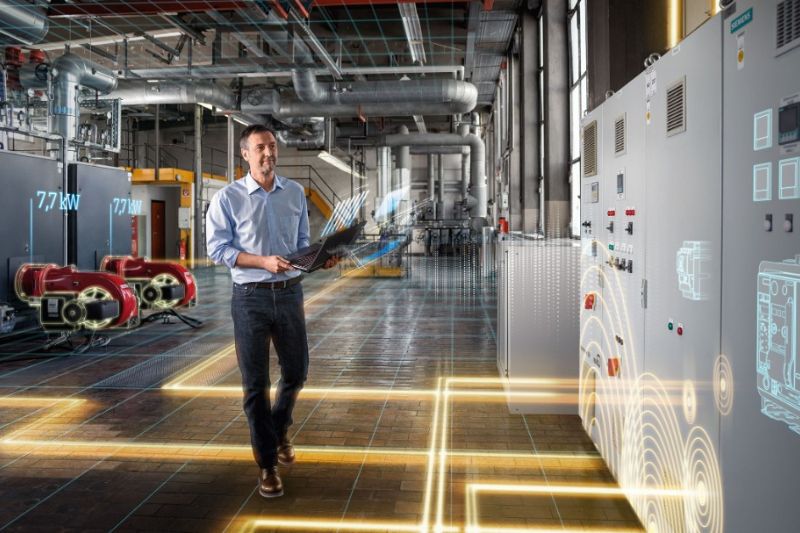Attributed to: Alvin Chan, Head of Electrical Products, Smart Infrastructure, Siemens Malaysia
Digitalization depends on an absolutely reliable power supply and the highest power quality. At the same time, today’s digital technologies are opening up brand-new opportunities for meeting the growing requirements on all levels of electrical power distribution. Especially for low voltage, this makes energy efficiency, predictive maintenance, and cybersecurity the central trend topics that are shaping both current and future developments.
The worldwide demand for electricity is expected to double by 2050. This means that as we decarbonize, it is of global importance that we create climate-friendly energy systems. It is not just a matter of using renewable energies: the goal is to find modern infrastructure solutions that guarantee a reliable power supply and sustainable mobility as well as connected living spaces in which grids interact intelligently with buildings, infrastructures, and industries.
A smart, low-voltage electrical infrastructure is essential for implementing connected energy systems. Distributed structures, digitalization, and the Internet of Things (IoT) require systems that provide automated plants, machines, and devices with a fail-safe power supply while also managing bidirectional power flows, acquiring data, and transmitting this data to the cloud. Traditional protection and switching tasks are still necessary, but the real future is in intelligence. It is all about transparency, data, and digitalization.
In view of these factors, three specific trend topics are shaping technological developments in low-voltage power distribution today: energy efficiency through power monitoring, predictive maintenance based on condition monitoring, and cybersecurity.
Trend topic 1: Energy efficiency through power monitoring
In Malaysia at the end of last year, the price of coal surged to US$200 (RM846) per tonne, up from around US$50 per tonne in mid-2020. By the end of May 2022, coal prices had risen to US$434 per tonne, with coal accounting for 59% of Malaysia’s key source of electricity generation.
For energy-intensive industrial plants in particular – and also for building and infrastructure operators – there is increasing pressure to reduce consumption, which will in turn reduce costs. At the same time, demands to minimize power consumption have been growing for years. In the wake of the energy transition and the global climate protection agreement, government regulations are calling for ever-higher efficiency standards. In Malaysia, large electric energy consumers (3 000 000 kWhr) are required to disclose energy consumption as per the Efficient Management of Electrical Energy Regulations 2008 (EMEER 2008).
One way to confront this challenging situation is with an operational energy management system based on the ISO 50001 and 50003 global standards. The foundation for successfully optimizing power consumption is a continuous and ongoing process of recording consumption, developing various efficiency measures, and implementing an appropriate and consistent concept – from the management level to the field level. It is essential that energy flows be made as transparent as possible. Specific savings measures can be derived only if a sufficient amount of energy data is available and is acquired at all the relevant locations.
The technological basis is power monitoring systems. Energy data can be acquired not just by measuring devices but also by communication-capable protection and switching devices.
The data acquired is usually transferred to higher-level systems via standard protocols. Multiple communication protocols can also be used simultaneously for fast and powerful data transfers. However, today’s new communication-capable devices go one step further by transferring measured values directly from the electrical infrastructure to the IoT. All the acquired data relevant to energy, power quality, and circuit breaker states can also be integrated in cloud-based power management systems. This creates brand-new opportunities. The systematic use of IoT platforms has distinct advantages for electrical engineering and building technology.
Trend topic 2: Predictive maintenance based on condition monitoring
Electrical and building management systems are subject to high demands. They have to guarantee the fail-safe, around-the-clock operation of buildings and infrastructures. Planning their maintenance is similarly time-consuming and is associated with high financial investments. Electrical power distribution in particular needs effective maintenance concepts for electrical engineering and building technology to prevent unscheduled and costly plant outages and repair time.
One concept is predictive maintenance, which is made possible by digitalization and the intelligent use of data. It’s also a concept that pays off. According to McKinsey, predictive maintenance can boost plant availability by five to 15 percent. At the same time, operators benefit from a reduction in maintenance costs of up to 25 percent.
The requisite information is provided by condition monitoring, which monitors and evaluates the technological condition of devices. For example, it reveals changes that signal the progressive wear of individual components. However, another way to acquire and analyze the relevant data is with the power monitoring system from Siemens’ SENTRON portfolio, which delivers accurate findings on the current operating state and on the remaining lifetime that can be expected.
Trend topic 3: Cybersecurity
For IoT-capable components, connecting to the Internet also means having to comply with the same high cybersecurity standards as other connected systems in order to guarantee the long-term operational safety of a company or building. The main issue is compliance with adequate cybersecurity standards – not just in the form of higher-level security concepts but also on the field level.
In other words, safety features integrated right in the devices are becoming the central component of a consistent, end-to-end cybersecurity concept. Specific approaches include systematically managing potential vulnerabilities throughout a component’s entire lifecycle, account management, write-protection restrictions, and signed firmware.
Intelligence in low-voltage systems
In view of these trends, what will be required is a smart electrical infrastructure on the low-voltage level that can be seamlessly integrated into connected, efficient, and sustainable ecosystems. Potential solutions include systems that provide a reliable and secure power supply with communication-capable components and digital applications that help companies significantly boost their energy and operational efficiency.


